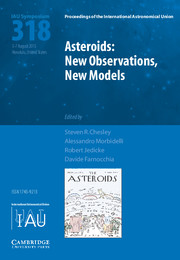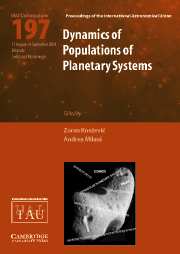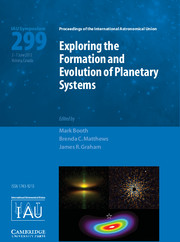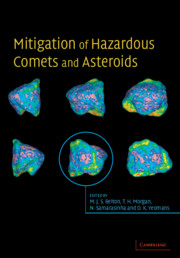Asteroids: New Observations, New Models (IAU S318)
Asteroids are the small, usually rocky, bodies that reside primarily in a belt between Mars and Jupiter. Individually, and as a population, they carry the signatures of the evolutionary processes that gave birth to the Solar System and shaped our planetary neighbourhood, as well as informing us about processes on broader scales and deeper cosmic times. The main asteroid belt is a lively place where the physical, rotational and orbital properties of asteroids are governed by a complicated interplay of collisions, planetary resonances, radiation forces, and the formation and fission of secondary bodies. The proceedings of IAU Symposium 318 are organised around the following core themes: origins, collisional evolution, orbital evolution, rotational evolution, and evolutional coupling. Together the contributions highlight the ongoing, exciting challenges for graduate students and researchers in this diverse field of study.
- Different aspects of asteroid research will interest a diverse group of scientists and researchers
- Provides an active case study at the intersection of computer science and astronomy, for how the data are processed, archived and distributed in a way that maximises the scientific return
- The main asteroid belt is a 'crossroads' in the Solar System, connected genetically or dynamically to other populations of small bodies - the volume can be a unifying force in the study of small bodies
Product details
April 2016Hardback
9781107138254
327 pages
255 × 179 × 16 mm
0.7kg
100 b/w illus.
Available
Table of Contents
- 1. Origins
- 2. Asteroid families
- 3. Binary asteroids
- 4. Main-belt connections
- 5. Activated asteroids
- 6. Physical properties
- 7. Impact hazard
- 8. Trajectory problems
- 9. Facilities.






